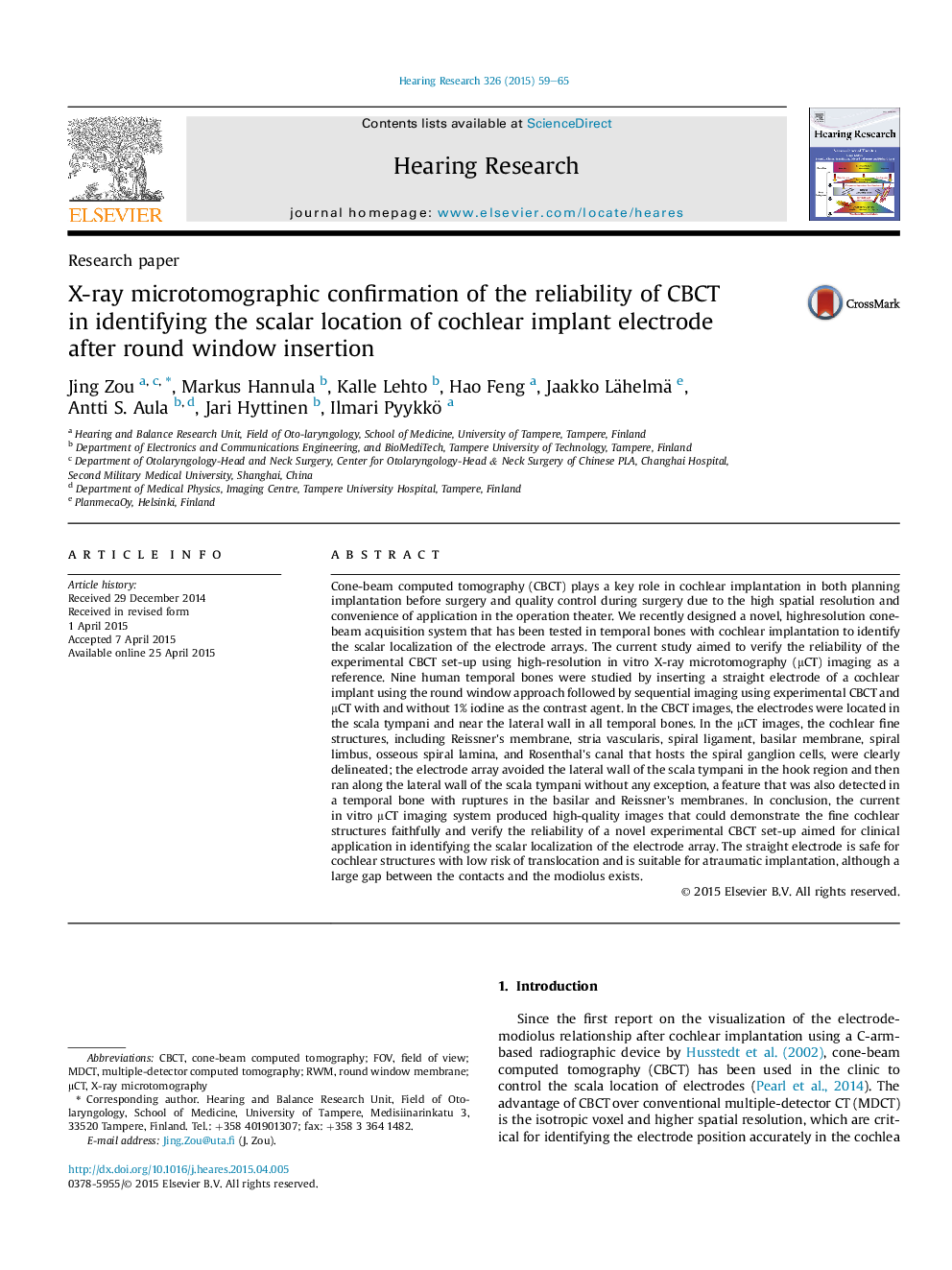| کد مقاله | کد نشریه | سال انتشار | مقاله انگلیسی | نسخه تمام متن |
|---|---|---|---|---|
| 4355108 | 1615574 | 2015 | 7 صفحه PDF | دانلود رایگان |

• CBCT showed that the electrode array resided in the scala tympani.
• The cochlear fine structures were visualized in high-resolution μCT images.
• μCT images supported that the straight electrode is safe for the cochlear structures.
Cone-beam computed tomography (CBCT) plays a key role in cochlear implantation in both planning implantation before surgery and quality control during surgery due to the high spatial resolution and convenience of application in the operation theater. We recently designed a novel, highresolution cone-beam acquisition system that has been tested in temporal bones with cochlear implantation to identify the scalar localization of the electrode arrays. The current study aimed to verify the reliability of the experimental CBCT set-up using high-resolution in vitro X-ray microtomography (μCT) imaging as a reference. Nine human temporal bones were studied by inserting a straight electrode of a cochlear implant using the round window approach followed by sequential imaging using experimental CBCT and μCT with and without 1% iodine as the contrast agent. In the CBCT images, the electrodes were located in the scala tympani and near the lateral wall in all temporal bones. In the μCT images, the cochlear fine structures, including Reissner's membrane, stria vascularis, spiral ligament, basilar membrane, spiral limbus, osseous spiral lamina, and Rosenthal's canal that hosts the spiral ganglion cells, were clearly delineated; the electrode array avoided the lateral wall of the scala tympani in the hook region and then ran along the lateral wall of the scala tympani without any exception, a feature that was also detected in a temporal bone with ruptures in the basilar and Reissner's membranes. In conclusion, the current in vitro μCT imaging system produced high-quality images that could demonstrate the fine cochlear structures faithfully and verify the reliability of a novel experimental CBCT set-up aimed for clinical application in identifying the scalar localization of the electrode array. The straight electrode is safe for cochlear structures with low risk of translocation and is suitable for atraumatic implantation, although a large gap between the contacts and the modiolus exists.
Journal: Hearing Research - Volume 326, August 2015, Pages 59–65